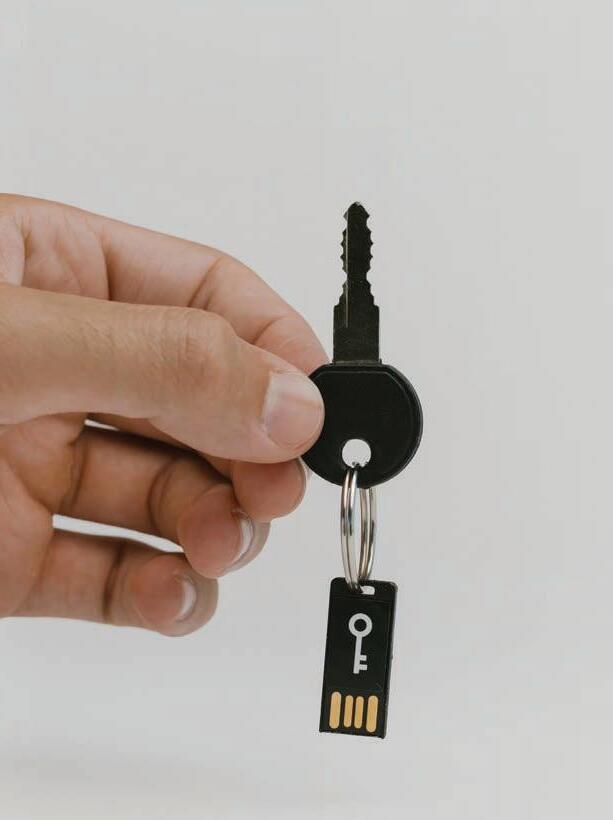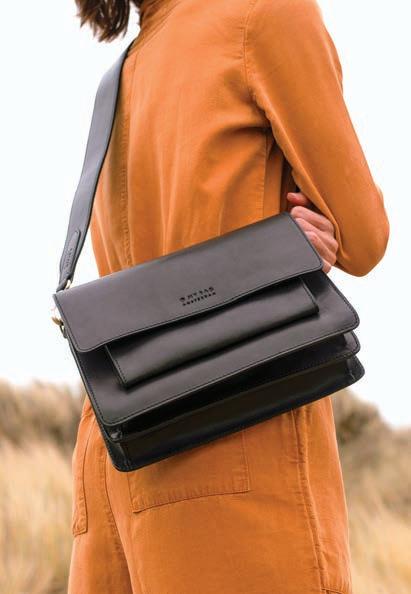
6 minute read
Thumbs up
WHEN IT COMES TO ALL THINGS TECHNO, IT’S A CASE OF OUT WITH THE OLD AND IN WITH THE NEW. OR IT IS? DON’T BIN YOUR OLD USB STICKS, THERE’S LIFE IN THEM YET… AND THEY COULD TURN OUT TO BE OF REAL VALUE, ESPECIALLY TO TRAVELLERS
Words: CHRIS PARTRIDGE
FREQUENT FLYERS often need to store important digital documents in a secure form to be immune from the perils of travel, such as empty batteries, screen breakages or theft. And they are rediscovering a gadget that used to be everywhere but was thought to have died out - the humble memory stick or thumb drive.
Those lumps of plastic with USB plugs sticking out were the standard way of distributing documents in the days before cloud storage. As a journalist I would acquire at least one at almost every press conference I attended, so I have a drawer full of them in my office.
They can be very handy, securely storing large files like photos, videos and apps in a form that just slips in your pocket. Even if you don’t have any hanging around, they are now incredibly cheap to buy – you can get 32GB thumb drives from Worten for less than a fiver, and a massive 512GB will only set you back €30 or so at amazon.es. They come in all shapes and sizes, some with bodies that can be turned or pushed in and out to reveal alternative USB-A or USB-C plugs, and many so small they can be carried on a keyring.
Old memory sticks usually have traditional USB-A plugs, which are fine for older laptops but may need an adaptor if they are to be used with the latest super-thin models that only sport USB-C.
And, of course, if you want to use one with a smartphone or tablet an adaptor of some sort will be essential. A suitable USB-A (female) to USB-C (male) adaptor can be had in a two-pack from Anker (anker.com), and adaptors made by various Chinese brands can be had for half that price on Amazon.
Another way of connecting memory sticks to laptops is via a hub or docking station, which is a handy thing to have if you also need to connect to a TV or external monitor, or to read other memory devices such as SD cards from your camera and so on.
Hubs vary in price dramatically depending on the speeds and charging powers involved. Belkin’s new Connect multiport adaptor, for example, has HDMi video, two SD card slots, an Ethernet port and a couple of USB-A ports, all for €80 at istore.pt . Anker’s 778 docking station has the latest Thunderbolt 4 charging system providing 100W to charge your laptop in record time, a 30W outlet for your other devices, and all the other ports including, of course, USB-A for your flash drives. However, this comes at a cost – check around for the best price but expect it to be over €400.
The top reason to carry a thumb drive is to store vital travel documents such as a scan of your passport, your itinerary, e-tickets and booking documents, and health stuff such as ailments, allergies, medications and vaccination certificates. With the drive in your pocket, you cannot lose them even if your phone is stolen and your laptop is in the hold.

Get down to business
Business travellers can also carry masses of documents such as PowerPoint presentations, spreadsheets and sales videos in a tiny thumb drive.
Of course, you don’t want all that information to fall into the wrong hands so it is a good idea to protect the drive with a password or, if you are really anxious, encrypt the entire contents. For Windows, free open source software such as Disk Cryptor or VeraCrypt do a great job. If you want to protect thumb drives used with Android devices, take a look at USB Lockit (free but with ads and in-app purchases) which sets a password to protect the drive contents.
Another great use for old thumb drives is to store apps that would take up too much space on your laptop’s memory. These are known as portable apps.
Portable apps store all the essential files they need on the thumb drive, and when you remove the drive all the installation files are removed instead of being left behind to clog up your system and slow your computer down.
The downsides to portable apps are that they tend not to be the latest version, and that they only work with Windows computers. Apps with portable versions include the Firefox and Chrome browsers, Skype, the VLC video player and the password manager KeePass. Other useful portable apps are Libre Office, the excellent and free office suite, and GIMP, the free alternative to ultra-expensive Photoshop.
Tops for Tails
If privacy while working abroad is a concern, an interesting system called Tails transforms any USB drive into a virtual hard drive that is your secure tunnel to the outside world. As you work online at that lovely cafe where the wifi is perhaps less than totally secure, all the tracks you leave as you browse are trapped on the drive. When you disconnect it at the end of the session, all the traces you left on the Web disappear.
Tails is in effect a computer in your flash drive, using a selection of apps to work on sensitive documents. The Tor browser with uBlock is a secure browser with an ad blocker; encrypted email is handled by Thunderbird 2 and LibreOffice is a secure office suite. It also includes Metadata Cleaner, which removes revealing metadata from files.
However, Tails recognises that you will need to keep some stuff and there is a feature called persistent memory for essential info. Tails is available free on tails.boum.org
Finally, one for the techies among you. A flash drive can hold a bunch of the tools you need to recover from Windows failure, be it a crash, a virus infection or simply forgetting your product key, a recovery drive may be able to get you back in action wherever you are. A highly rated toolkit is Hiren’s Boot CD, available for free download at hirensbootcd.org. If the worst happens, just insert the flash drive and things should start happening.
The bag you carry tells a story, so make it a good one. My bag story was the delight in gettting to know a new brand from Amsterdam called OmyBag, which produces the most gorgeous handbags, bum bags, wallets and small leather goods.


OmyBag is a women-driven company, and not only in their office in Amsterdam, but also at the four partner tanneries and partner factories in Kolkata, where women are promoted and have the possibility to reach higher positions and gain fair wages.
OmyBag uses premium quality leather which is tanned without the use of Chromium. Chrome tanning was developed as a faster and less expensive alternative to vegetable tanning, but it is a global environmental disaster that jeopardizes the health of millions of leatherworkers. In the partner factories of OmyBag the tanning is done using vegetable tannins, which are non-toxic for workers and the environment, and also give the bags their natural trademark look.
And some bags and purses come in a vegan version to accommodate customers who look for an animal free product. The bags are made of Apple leather, which is manufactured from apple waste - 100% vegan and sustainable - and the bags actually have a very similar appearance to the leather versions.
As we are celebrating International Women’s Day on the 8th of this month, I would like the purpose of OmyBag to create awareness of women’s rights, focus on gender equality and seek a positive change to the world. In Kolkata they are trying their very best to make sure that one day, every little girl’s voice will be heard, and I am proud to be a small part of this.
Mia Farrow

The daughter of movie star Maureen O’Sullivan and director John Farrow, Mia Farrow shot to fame when she played Allison McKenzie in the steamy TV series Peyton Place in the 1960s. Her father had died when she was 17 and she originally found work as a model to help support her family. Her movie breakthrough came in 1968 when she starred in the classic horror film Rosemary’s Baby and also in The Great Gatsby six years later.
As a young woman she became as famous for her marriages – first briefly to Frank Sinatra, then to conductor Andre Previn, and then from 1980 to 1992, to Woody Allen. She appeared in many of his films including Zelig and Hannah and Her Sisters.
After their well-publicised separation, she accused him of abusing their young daughter, an accusation which Woody Allen has always denied and which has never been proven. Since then, she has taken small parts in films and TV and also concentrated on her work as a UNICEF Goodwill Ambassador, as well as bringing up her 14 children – four biological and ten adopted.

She is known for her humanitarian work in Chad and the Central African Republic, and is also an environmental activist. Today, she lives in Connecticut and spends much time with her nine grandchildren. Brought up a Catholic and having spent time in India when the Beatles visited the Maharishi, she still has a strong religious faith.









